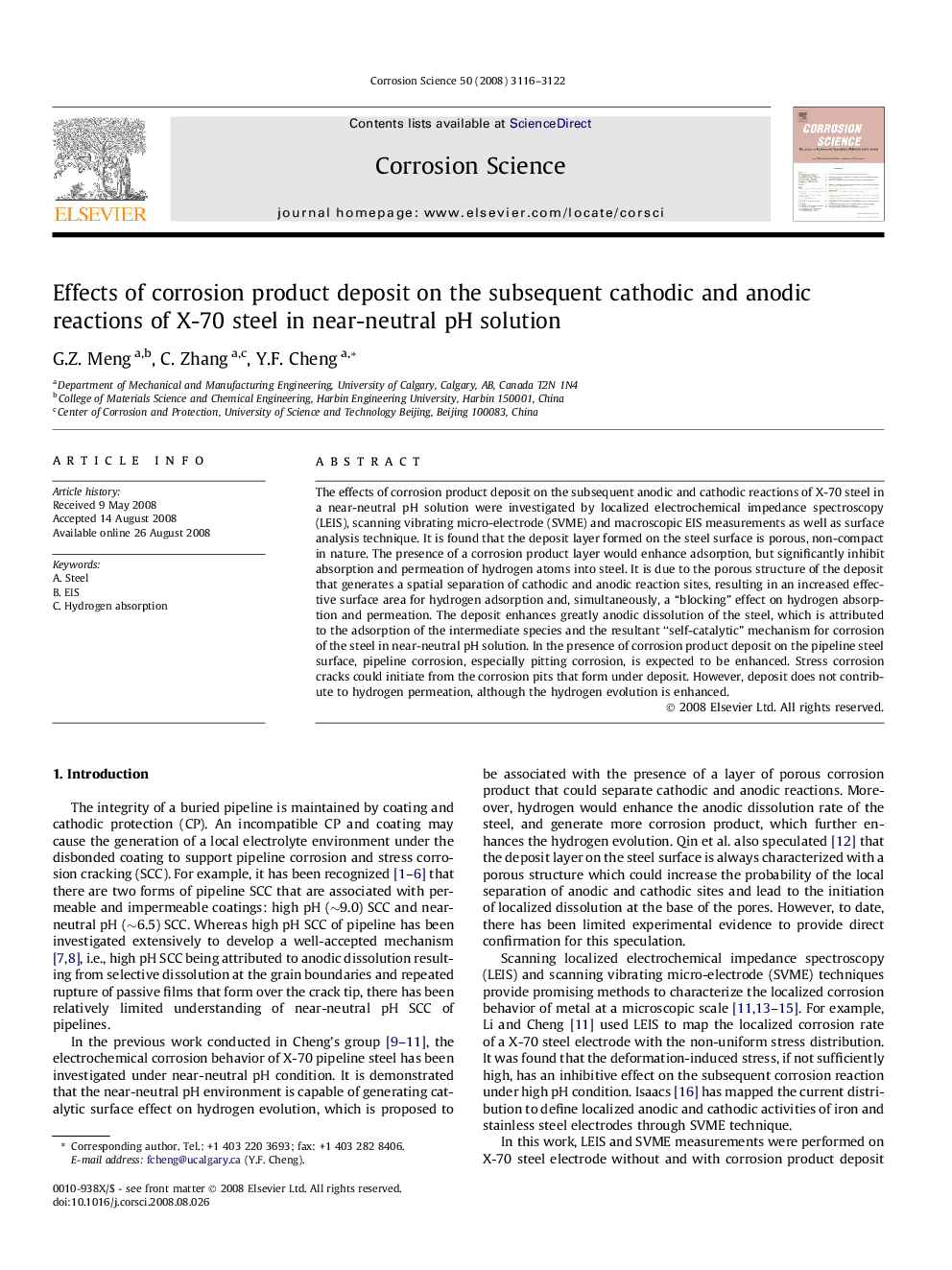| Article ID | Journal | Published Year | Pages | File Type |
|---|---|---|---|---|
| 1471444 | Corrosion Science | 2008 | 7 Pages |
The effects of corrosion product deposit on the subsequent anodic and cathodic reactions of X-70 steel in a near-neutral pH solution were investigated by localized electrochemical impedance spectroscopy (LEIS), scanning vibrating micro-electrode (SVME) and macroscopic EIS measurements as well as surface analysis technique. It is found that the deposit layer formed on the steel surface is porous, non-compact in nature. The presence of a corrosion product layer would enhance adsorption, but significantly inhibit absorption and permeation of hydrogen atoms into steel. It is due to the porous structure of the deposit that generates a spatial separation of cathodic and anodic reaction sites, resulting in an increased effective surface area for hydrogen adsorption and, simultaneously, a “blocking” effect on hydrogen absorption and permeation. The deposit enhances greatly anodic dissolution of the steel, which is attributed to the adsorption of the intermediate species and the resultant “self-catalytic” mechanism for corrosion of the steel in near-neutral pH solution. In the presence of corrosion product deposit on the pipeline steel surface, pipeline corrosion, especially pitting corrosion, is expected to be enhanced. Stress corrosion cracks could initiate from the corrosion pits that form under deposit. However, deposit does not contribute to hydrogen permeation, although the hydrogen evolution is enhanced.
